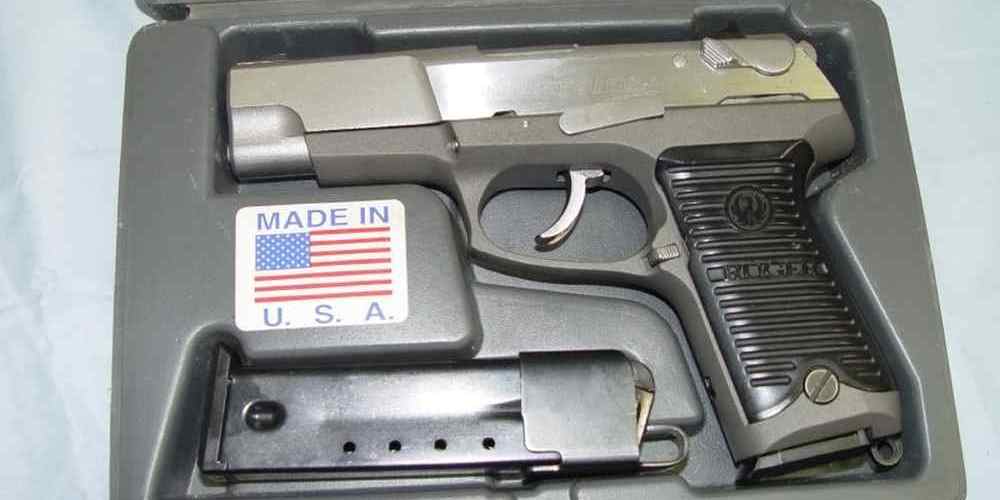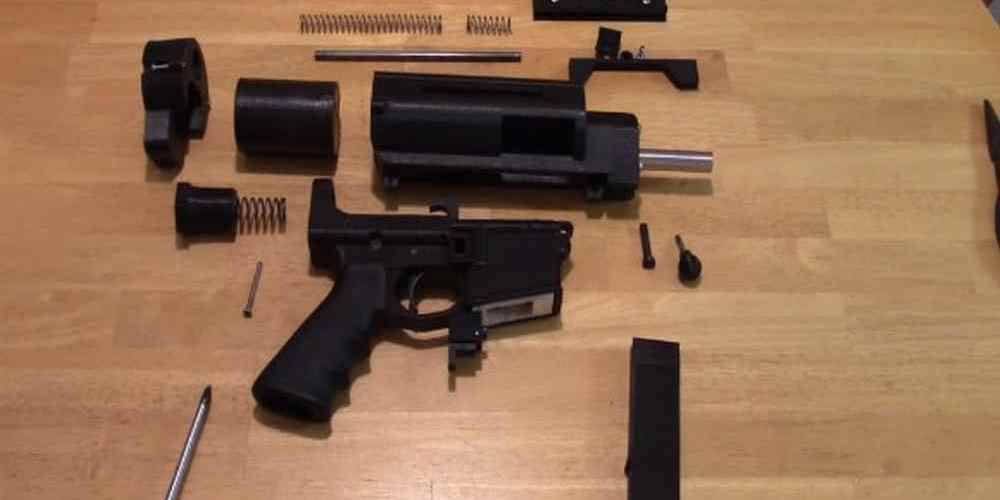“Bringing history back to life, one pistol at a time.”
Preserving the History: Restoring Vintage Semi-Auto Pistols
Vintage semi-auto pistols hold a special place in the hearts of gun enthusiasts and collectors alike. These relics from the past not only serve as a reminder of the history of firearms but also showcase the craftsmanship and innovation of their time. However, over the years, these pistols may have fallen into disrepair or lost their original luster. Restoring these vintage semi-auto pistols not only preserves their historical value but also allows them to be enjoyed and appreciated for generations to come.
When it comes to restoring vintage semi-auto pistols, there are a few key steps to keep in mind. The first step is to carefully disassemble the pistol, taking note of each part and its condition. This allows the restorer to assess the extent of the damage and determine what repairs or replacements are needed. It is important to handle each part with care, as some may be fragile or prone to damage.
Once the pistol has been disassembled, the next step is to clean each part thoroughly. This involves removing any dirt, grime, or rust that may have accumulated over the years. A gentle cleaning solution and a soft brush can be used to carefully clean each part without causing any damage. It is important to take your time with this step, as a thorough cleaning can make a significant difference in the overall appearance and functionality of the pistol.
After the pistol has been cleaned, the next step is to repair or replace any damaged parts. This may involve sourcing replacement parts from a reputable dealer or gunsmith. It is important to ensure that any replacement parts are compatible with the specific make and model of the pistol. Care should be taken when installing new parts to avoid causing any damage to the pistol.
Once the pistol has been cleaned and repaired, the next step is to reassemble it. This can be a delicate process, as each part must be carefully fitted together to ensure that the pistol functions properly. It is important to refer to the manufacturer’s instructions or seek guidance from a knowledgeable gunsmith to ensure that the pistol is reassembled correctly.
After the pistol has been reassembled, the final step is to test fire it to ensure that it functions properly. This should be done in a safe and controlled environment, following all necessary safety precautions. If the pistol does not function as expected, further adjustments or repairs may be needed.
Restoring vintage semi-auto pistols is a labor of love that requires patience, skill, and attention to detail. However, the end result is well worth the effort, as these pistols are not only restored to their former glory but also preserved for future generations to enjoy. By taking the time to restore these relics from the past, we can ensure that the history of firearms is not forgotten and that these vintage semi-auto pistols continue to be appreciated for years to come.
Tips and Tricks for Restoring Old Relics
Restoring vintage semi-auto pistols can be a rewarding and fulfilling experience for gun enthusiasts and collectors alike. These old relics hold a special place in the hearts of many, as they represent a piece of history and craftsmanship that is often hard to come by in today’s modern firearms. However, restoring these pistols can be a challenging task, requiring patience, skill, and attention to detail. In this article, we will provide you with some tips and tricks for reviving old relics and bringing them back to their former glory.

One of the first steps in restoring a vintage semi-auto pistol is to thoroughly clean and inspect the firearm. This involves disassembling the pistol and carefully examining each part for signs of wear, rust, or damage. It is important to take your time during this process, as rushing through it can lead to further damage to the pistol. Once the pistol has been cleaned and inspected, you can begin the restoration process.
One common issue that many vintage semi-auto pistols face is rust and corrosion. This can be caused by improper storage or neglect over the years. To remove rust from a pistol, you can use a variety of methods, such as soaking the parts in a rust remover solution or using a wire brush to scrub away the rust. Once the rust has been removed, be sure to thoroughly clean and oil the parts to prevent further corrosion.
Another common issue with vintage semi-auto pistols is worn or damaged parts. This can include springs, pins, and other small components that may need to be replaced. It is important to use high-quality replacement parts when restoring a vintage pistol, as using cheap or inferior parts can lead to malfunctions and safety issues. Be sure to carefully research and source the correct parts for your specific pistol model to ensure a proper fit and function.
In addition to replacing worn parts, you may also need to refinish the pistol’s exterior to restore its original appearance. This can involve stripping the old finish, sanding down any imperfections, and applying a new finish such as bluing or parkerizing. It is important to take your time during this process and follow the manufacturer’s instructions for the specific finish you are using to achieve the best results.
Once the pistol has been cleaned, repaired, and refinished, it is important to test fire the firearm to ensure that it functions properly. This can be done at a shooting range or in a controlled environment where safety precautions can be taken. Be sure to start with a small number of rounds and gradually increase the amount as you gain confidence in the pistol’s reliability.
In conclusion, restoring vintage semi-auto pistols can be a challenging but rewarding experience for gun enthusiasts. By following these tips and tricks, you can bring old relics back to life and enjoy the craftsmanship and history that these pistols have to offer. Remember to take your time, be patient, and pay attention to detail throughout the restoration process to ensure a successful outcome. Happy restoring!
The Art of Reviving Antique Firearms
Restoring vintage semi-auto pistols is a labor of love for many gun enthusiasts. These old relics hold a special place in the hearts of collectors and shooters alike, as they represent a bygone era of craftsmanship and design. However, bringing these guns back to their former glory requires a delicate touch and a keen eye for detail.
One of the first steps in restoring a vintage semi-auto pistol is to assess its condition. Many of these guns have been sitting in storage for years, collecting dust and rust. It’s important to carefully inspect the firearm for any signs of damage or wear, such as pitting on the metal surfaces or cracks in the wood grips. Once the condition of the gun has been determined, it’s time to start the restoration process.
The first step in restoring a vintage semi-auto pistol is to disassemble it completely. This allows the gunsmith to clean each individual part thoroughly and inspect it for any signs of wear or damage. It’s important to take your time during this process, as rushing can lead to mistakes that could potentially damage the gun further.
After the gun has been disassembled and cleaned, it’s time to start the restoration process. This may involve refinishing the metal surfaces, replacing worn or damaged parts, or repairing any cracks or chips in the wood grips. It’s important to use high-quality materials and tools during this process to ensure that the gun is restored to its original condition.
One of the most challenging aspects of restoring a vintage semi-auto pistol is finding replacement parts. Many of these guns are no longer in production, so finding original parts can be difficult. However, there are many aftermarket suppliers that specialize in vintage gun parts, making it easier to find the components needed to complete the restoration.
Once the gun has been reassembled and all necessary repairs have been made, it’s time to test fire it. This is an important step in the restoration process, as it allows the gunsmith to ensure that the firearm is functioning properly and safely. It’s important to take your time during this process and make any necessary adjustments to ensure that the gun is in perfect working order.
Restoring vintage semi-auto pistols is a rewarding experience that allows gun enthusiasts to bring these old relics back to life. It requires patience, skill, and a keen eye for detail, but the end result is well worth the effort. Whether you’re a collector looking to add to your collection or a shooter looking for a unique firearm to take to the range, restoring vintage semi-auto pistols is a labor of love that pays off in the end.
Exploring the World of Vintage Semi-Auto Pistols
Vintage semi-auto pistols hold a special place in the hearts of gun enthusiasts and collectors alike. These relics from the past not only have historical significance but also possess a unique charm that modern firearms often lack. However, due to their age and wear, many vintage semi-auto pistols may require restoration to bring them back to their former glory.
Restoring a vintage semi-auto pistol is a labor of love that requires patience, skill, and attention to detail. The process involves disassembling the pistol, cleaning each part thoroughly, inspecting for any damage or wear, and replacing any worn or damaged components. It is essential to use the right tools and techniques to ensure that the restoration is done correctly and safely.
One of the first steps in restoring a vintage semi-auto pistol is disassembling the firearm. This involves removing the slide, barrel, recoil spring, and other components to access the internal parts of the pistol. It is crucial to follow the manufacturer’s instructions or consult a gunsmith to ensure that the disassembly is done correctly and safely.
Once the pistol is disassembled, each part must be cleaned thoroughly to remove any dirt, grime, or rust that may have accumulated over the years. Using a solvent and a cleaning brush, gently scrub each part to ensure that it is free from any debris. It is essential to be gentle when cleaning to avoid damaging the delicate components of the pistol.
After cleaning, each part must be inspected for any damage or wear. This includes checking for cracks, pitting, or other signs of deterioration that may affect the function of the pistol. Any damaged or worn parts should be replaced to ensure that the pistol functions properly and safely.
Replacing worn or damaged parts can be a challenging task, as many vintage semi-auto pistols may have discontinued or hard-to-find components. However, there are many resources available to help collectors and enthusiasts locate the parts they need, including online forums, gun shows, and specialty shops that cater to vintage firearms.
Once all the parts have been cleaned, inspected, and replaced as needed, it is time to reassemble the pistol. This step requires careful attention to detail to ensure that each part is correctly aligned and fitted together. It is essential to follow the manufacturer’s instructions or consult a gunsmith to ensure that the reassembly is done correctly and safely.
After reassembly, the pistol should be function-tested to ensure that it operates correctly and safely. This involves checking the trigger pull, slide operation, and overall function of the pistol to ensure that it is in proper working order. Any issues should be addressed promptly to prevent any potential safety hazards.
In conclusion, restoring a vintage semi-auto pistol is a rewarding experience that allows collectors and enthusiasts to bring these old relics back to life. By following the proper steps and techniques, it is possible to revive old pistols and enjoy them for years to come. Whether you are a seasoned collector or a novice enthusiast, restoring vintage semi-auto pistols is a fulfilling hobby that allows you to appreciate the craftsmanship and history of these timeless firearms.
Restoring Old Relics: A Step-by-Step Guide
Restoring vintage semi-auto pistols can be a rewarding and fulfilling experience for gun enthusiasts and collectors alike. Bringing an old relic back to its former glory requires patience, attention to detail, and a bit of elbow grease. In this step-by-step guide, we will walk you through the process of reviving old relics and restoring vintage semi-auto pistols.
The first step in restoring a vintage semi-auto pistol is to thoroughly clean the firearm. Over time, dirt, grime, and residue can build up on the gun’s surface, affecting its appearance and performance. To clean the pistol, start by disassembling it according to the manufacturer’s instructions. Use a cleaning solvent and a soft brush to remove any dirt and debris from the gun’s components. Pay special attention to hard-to-reach areas, such as the barrel and slide, to ensure a thorough cleaning.
Once the pistol is clean, inspect it for any signs of wear or damage. Look for rust, pitting, or scratches on the gun’s surface, as these can affect its functionality and value. If you find any damage, consider having the pistol professionally repaired or refinished to restore its original appearance.
After cleaning and inspecting the pistol, the next step is to refinish the gun’s metal components. Refinishing can help protect the pistol from rust and corrosion, as well as improve its overall appearance. There are several methods for refinishing a vintage semi-auto pistol, including bluing, parkerizing, and cerakoting. Choose a finish that best suits your preferences and the pistol’s original appearance.
To refinish the pistol, start by stripping the old finish from the gun’s metal components. Use a chemical stripper or abrasive material to remove the existing finish, taking care not to damage the metal underneath. Once the old finish has been removed, clean the metal thoroughly to remove any residue or debris.
After cleaning the metal components, apply the new finish according to the manufacturer’s instructions. Whether you choose to blue, parkerize, or cerakote the pistol, be sure to follow the proper application techniques to achieve a smooth and even finish. Allow the finish to dry completely before reassembling the pistol.
Once the pistol has been cleaned, inspected, and refinished, the final step is to reassemble the gun. Carefully reassemble the pistol according to the manufacturer’s instructions, taking care to properly align and secure each component. Test the pistol’s functionality by dry firing it and cycling the action to ensure everything is in working order.
In conclusion, restoring vintage semi-auto pistols is a labor of love that requires time, patience, and attention to detail. By following this step-by-step guide, you can bring an old relic back to life and enjoy the beauty and craftsmanship of vintage firearms. Remember to take your time, be thorough in your cleaning and inspection, and choose the right finish for your pistol. With dedication and care, you can revive old relics and restore vintage semi-auto pistols to their former glory.





